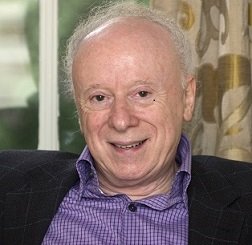 This year marks the 50th anniversary of the discovery of the chemical structure of DNA and the creation of a lung-heart machine that allowed open-heart surgeries. The year when these discoveries were made, the show was stolen by another event — the first issue of Playboy magazine featuring Marilyn Monroe on its cover. While the latter was greeted by the public with thunderous enthusiasm , the initial reaction to the double helix was lukewarm at best.
This year marks the 50th anniversary of the discovery of the chemical structure of DNA and the creation of a lung-heart machine that allowed open-heart surgeries. The year when these discoveries were made, the show was stolen by another event — the first issue of Playboy magazine featuring Marilyn Monroe on its cover. While the latter was greeted by the public with thunderous enthusiasm , the initial reaction to the double helix was lukewarm at best.
It's a grand year for celebrating science
Few scientific events have been celebrated so grandiosely as this year's 50th anniversary of the discovery of the chemical structure of DNA. The centerpiece of Watson and Crick's one-page Nature paper, published on April 25, 1953, was a picture of a model of the double helix that was beautiful, revealing, and tantalizing in its implications for biology and medicine. This is all old history that everyone knows.
But what everyone may not remember is that several months after Nature published the Watson and Crick model of DNA, Playboy magazine appeared on the newsstands for the first time in November 1953. This maiden issue of Playboy featured in its centerfold a picture of a biological structure that was just as beautiful, revealing, and tantalizing as the Watson-Crick structure of DNA—a voluptuous Marilyn Monroe curled up in a helical position just like DNA, albeit left-handed DNA. One wonders whether Hugh Hefner and his photographers had seen the April issue of Nature!
While Marilyn Monroe created an immediate public stir, the double helix was not greeted with such thunderous enthusiasm. The general scientific community simply did not appreciate the revolutionary significance of the double helix when it first appeared. From 1953 to 1960, Watson and Crick's 1953 paper was mentioned in Nature only 24 times and less than 100 times in the entire scientific literature. Perhaps scientists were spending more time scrutinizing the helical structure in Playboy than its iconic counterpart in Nature. The full impact of the double helix did not hit the mainstream of biology until the early 1960s, following the triple discoveries of in vitro protein synthesis, messenger RNA, and the genetic code.
During this year's celebratory events surrounding the 50th anniversary of the double helix, there has been no mention, surprisingly, of one other scientific breakthrough that also turned 50 this year — a breakthrough with ramifications that have had as profound an influence on medicine as the double helix. On May 6, 1953, John Gibbon, Jr. used his newly created heart-lung machine to perform the first successful open-heart operation in a human being, repairing a hole in the heart of an 18-year-old girl with atrial septal defect. Gibbon experimented in animals continuously for 23 years before he perfected the device that ultimately made it possible to stop the heart during surgery without endangering the patient's life. His heart-lung machine removed the blood from the patient's veins, oxygenated it with air, and then pumped the oxygenated blood back into the patient's arteries, bypassing the heart and allowing the surgeon to perform open-heart surgery.
John Gibbon's persistence for 23 years paid off royally. His invention has saved the lives of tens of millions of people over the last 50 years. Modern versions of the original heart-lung machine are used today to replace congenital heart defects in babies, children, and adults; to repair heart valves damaged by rheumatic fever; to restore the heart's circulatory system in coronary bypass operations; and to perform heart transplants. Last year alone, more than 700,000 open-heart operations were carried out in the United States, including 610,000 coronary bypass procedures, 90,000 valve replacements, and 2500 heart transplants.
In the tradition of Watson and Crick (who received the Lasker Basic Award in 1960) and John Gibbon (who received the Lasker Clinical Award in 1968), this year's Lasker Awards celebrate pioneering achievements that have opened new fields of biomedical science.
I will present the Lasker Basic Award, after which the Lasker Clinical Award will be presented by Craig Thompson, who is Scientific Director of the Abramson Research Institute at the University of Pennsylvania Cancer Center in Philadelphia. Craig is a distinguished physician-scientist in the field of immunology and cancer biology who always enlightens our Jury deliberations with his broad knowledge of biology and medicine.
